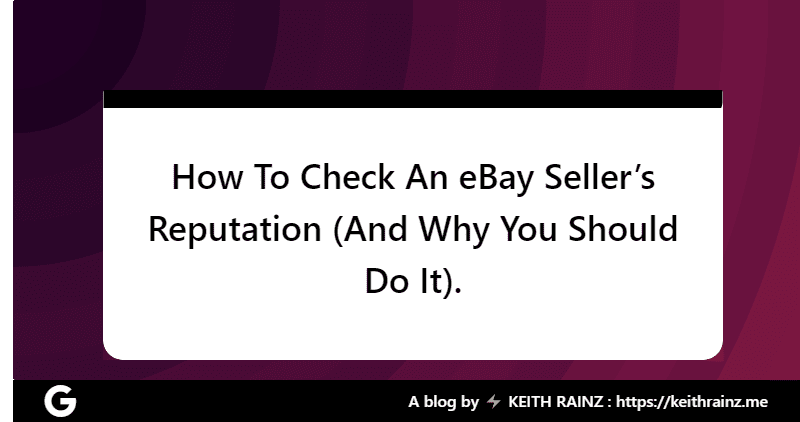Learn How To Check An eBay Seller’s Reputation (And Why You Should Do It). When you purchase something from an eBay seller, you are essentially handing over your money in the hopes of receiving something in return. Whatever assurances eBay gives you about your safety, nothing is guaranteed: if you give your money to scammers all the time without doing any checks, the chances are you won’t get it all back.
As a result, you should always check the seller’s reputation, also known as their “feedback rating.” This is a quick and easy-to-read summary of their eBay seller history, which will help you decide whether or not to trust them with your money. Buying anything is a calculated risk, and you want to reduce that risk as much as possible.
How to Check the Ratings of Feedbacks.
On each item’s description page, there is a box in the top-right corner labeled “Seller information” that contains information about the seller. This section includes the seller’s name, feedback score, and percentage of positive feedback, as well as any stars they have earned.
eBay sellers are assigned different colored stars based on their rating, in the following order: yellow, blue, turquoise, purple, red, green, shooting yellow, shooting turquoise, shooting purple, and shooting red. Anyone with a ‘shooting’ star on their profile is a seasoned eBay user you can trust.
If you click on the seller’s name, you’ll be taken to their “member profile” page, which gives you a more in-depth look at their reputation. The total number of people who gave them a positive or negative rating, as well as a breakdown by time, are displayed on this page. You can also see a complete history of all comments made about them, with the most recent comments appearing first.
What to Keep an Eye On
You may believe that anyone with a large number can be trusted, but this is not always the case. It’s more important to look at their positive feedback percentage – anything below 99 percent should raise an alarm and prompt further investigation.
Examine the first visible page of the most recent transactions: are there any negative remarks? What do they have to say? Consider what others have gone through, as it could happen to you if you deal with this person. However, be careful not to punish sellers unfairly if they did bad things on eBay in the past but have since improved. You should examine the breakdown by time and disregard any negative feedback from a long time ago. However, if a seller appears to have received an unusually large amount of negative feedback in the last month or so, you should be concerned.
Now that you know who to trust, it’s a good idea to brush up on how different types of auctions work so you don’t make a mistake that makes you and your feedback page look bad. The subject of our next email will be the various types of auctions you can expect to see on eBay.






